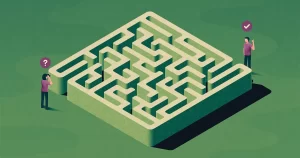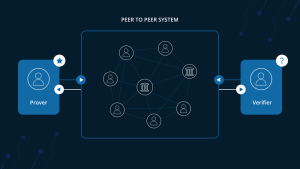Zero-Knowledge Proof (ZKP) algorithms are a special kind of math that helps keep information private while still proving it’s true. ZKP algorithms use math to prove that the receiving party is genuine. They were first proposed in the 1980s by MIT researchers.
There are two types of ZKP algorithms:
- Interactive Zero-Knowledge Proof: These involve a back-and-forth interaction between the parties with mathematical challenges to be solved.
- Non-Interactive Zero-Knowledge Proof: These don’t require direct interaction or happen later. They need more computing power.
You might like it: What is Blockchain Sharding?

Zero-knowledge proofs have three important conditions:
- Completeness: If a statement is true, the verifying party can confirm the receiving party has the information.
- Soundness: A statement can’t be faked or proven false. The verifying party can’t be tricked into believing the information if it’s not true.
- Zero–knowledge: The verifying party only learns the truth or falsehood of the statement and doesn’t gain any other extra information.

By using ZKP algorithms, we can prove the information is true without revealing sensitive details, ensuring privacy and security in transactions.
ZK proofs are handy for many situations where we want to protect privacy and security. They provide a clever way to prove something is true without having to spill the beans on sensitive details.
You can present your own thoughts as comments about the topic. Moreover, you can follow us on Telegram and YouTube channels for the kind of the news.


